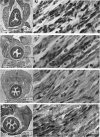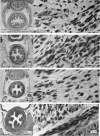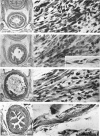Full text
PDF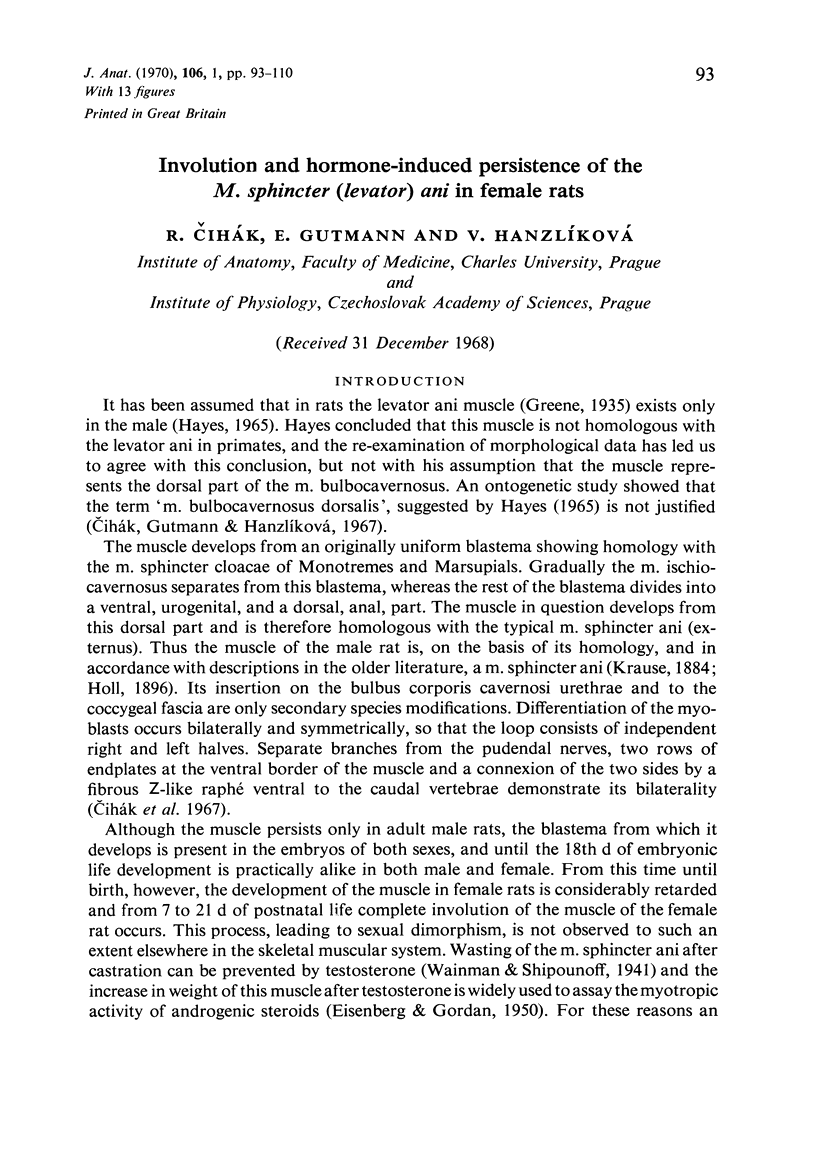

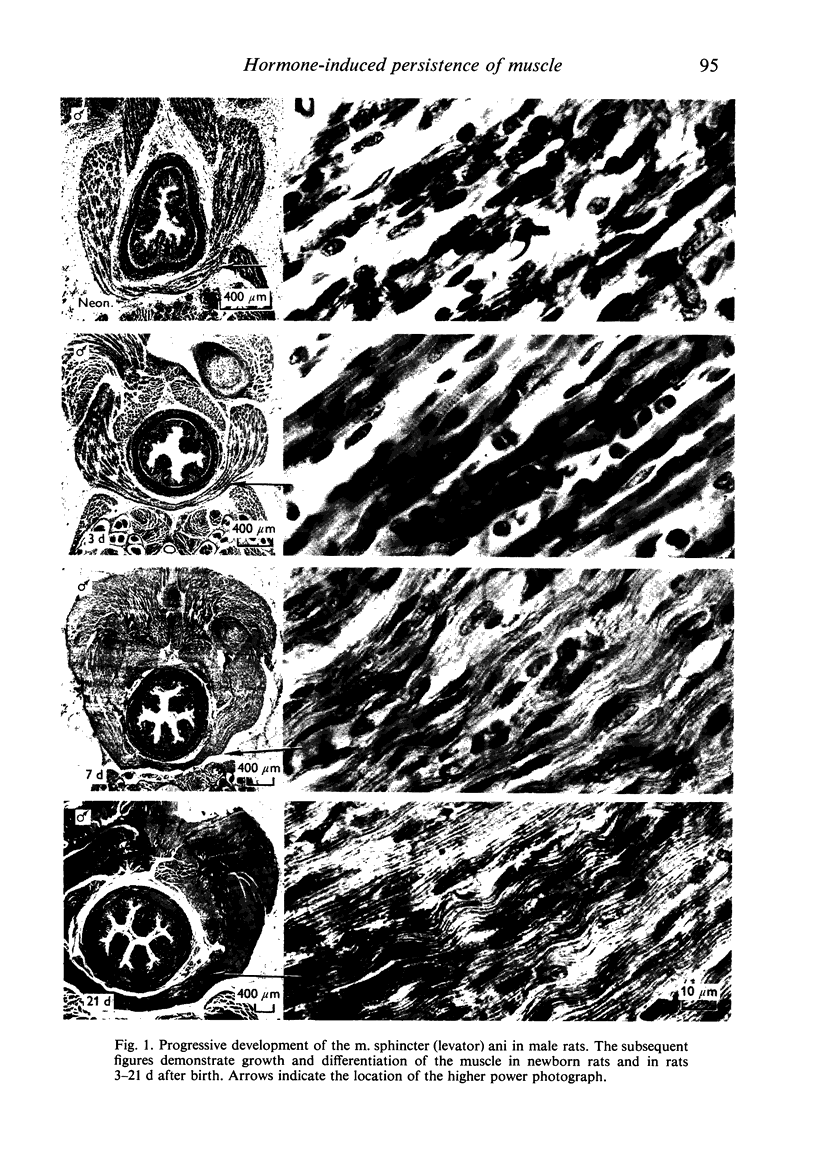
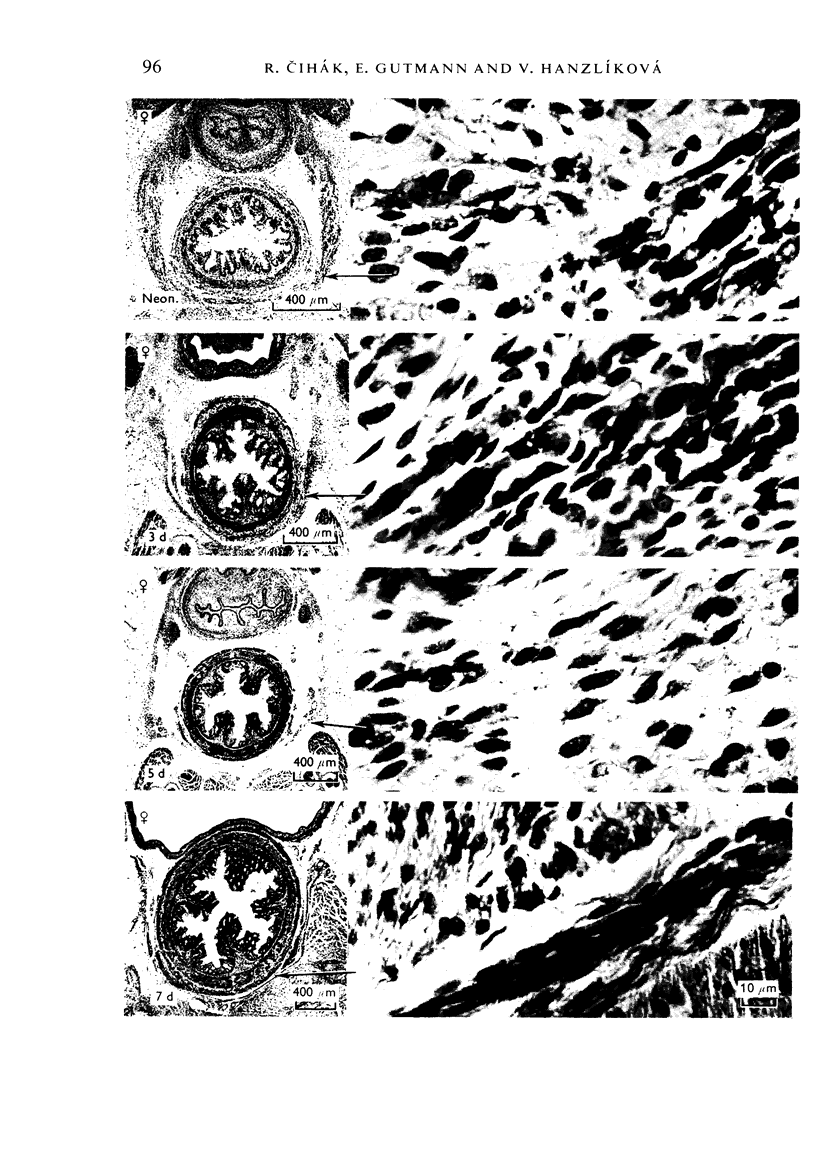
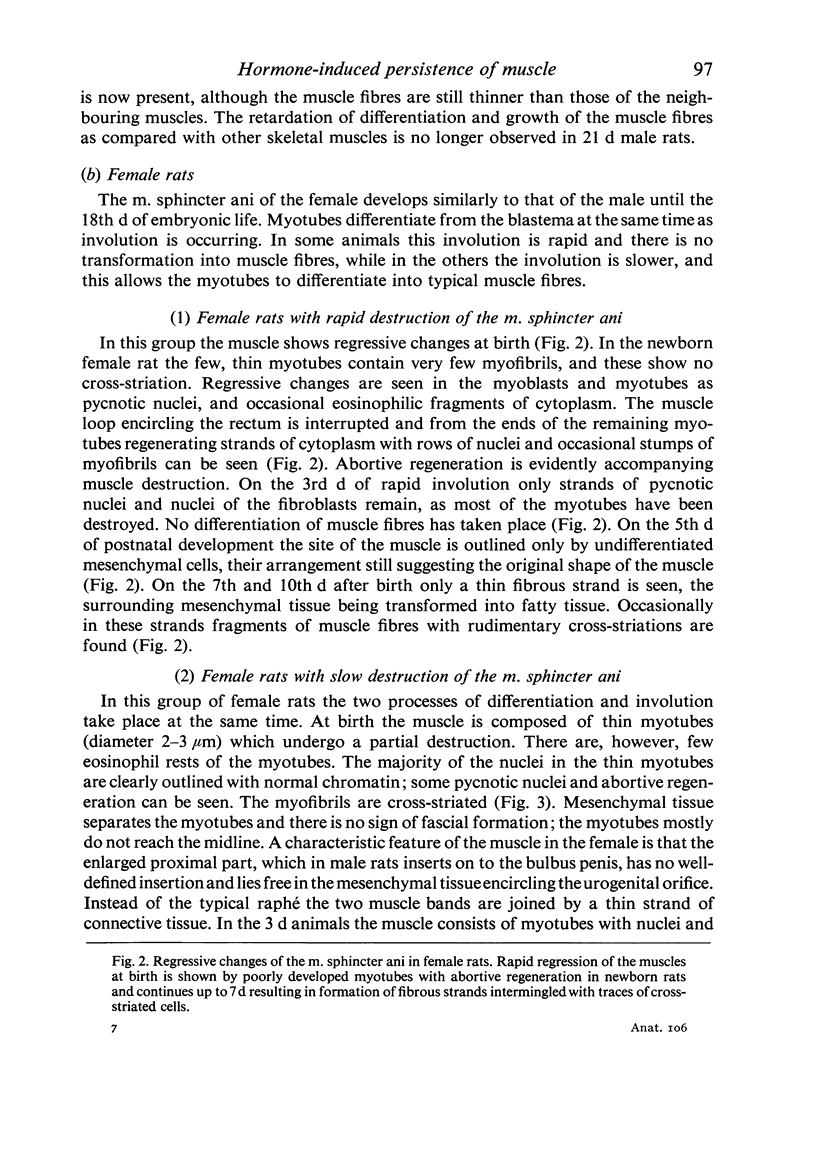

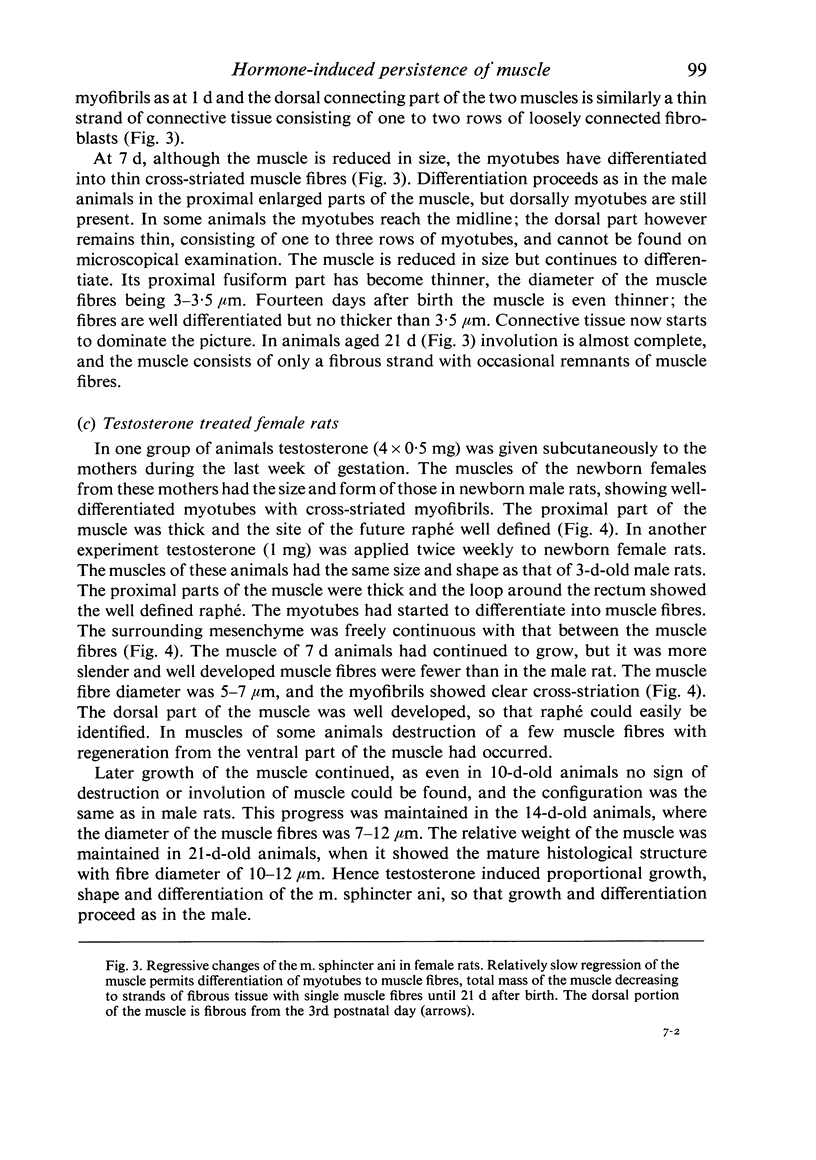

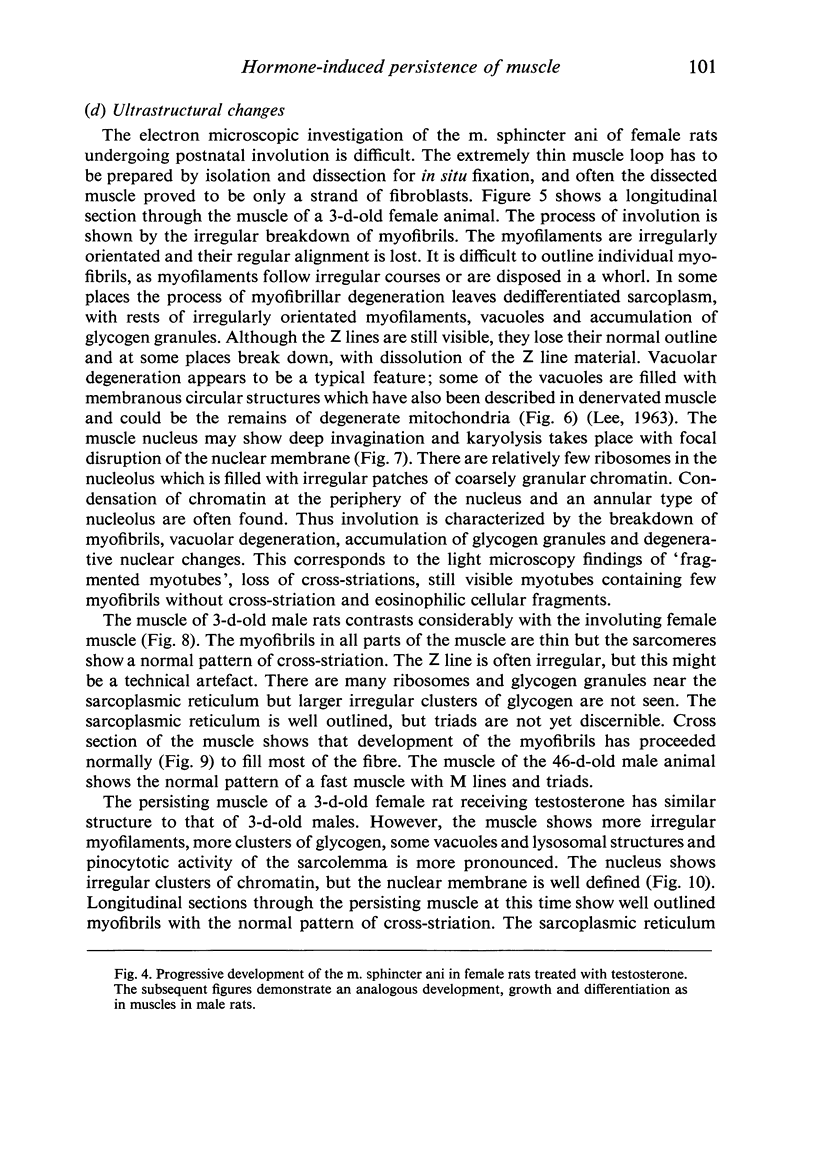
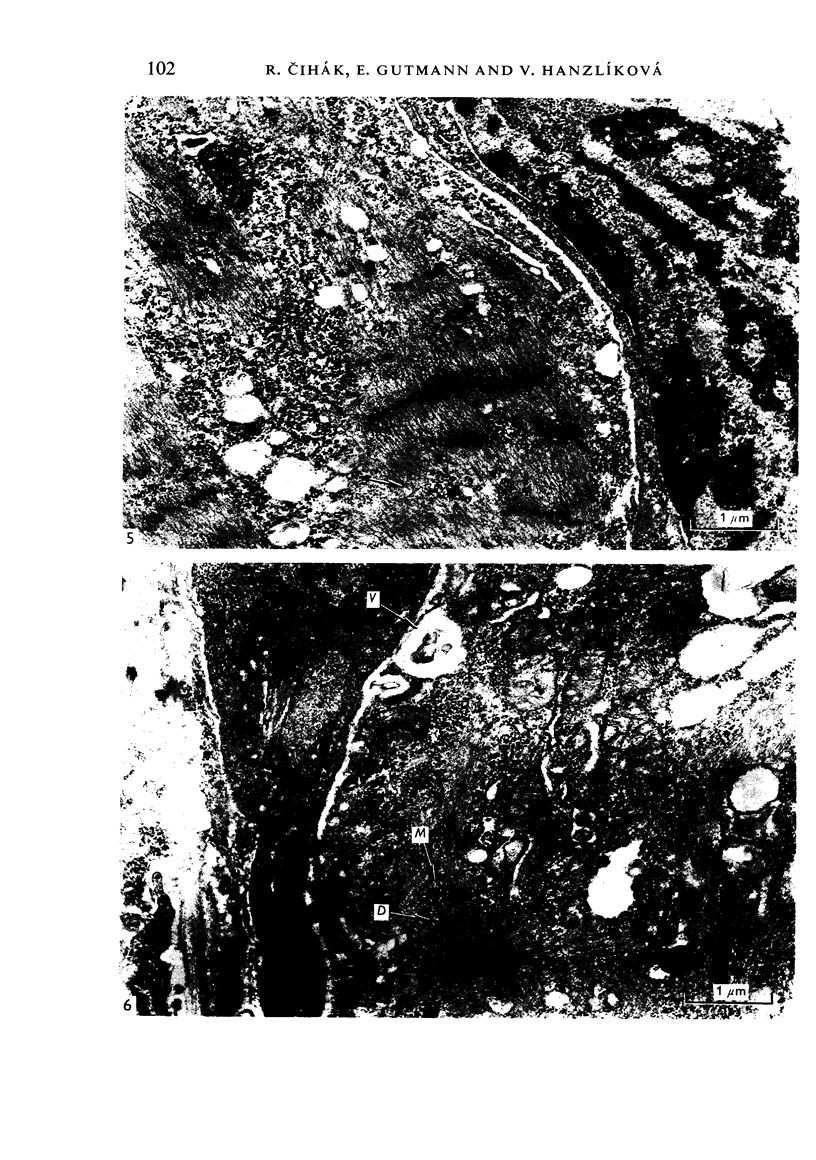
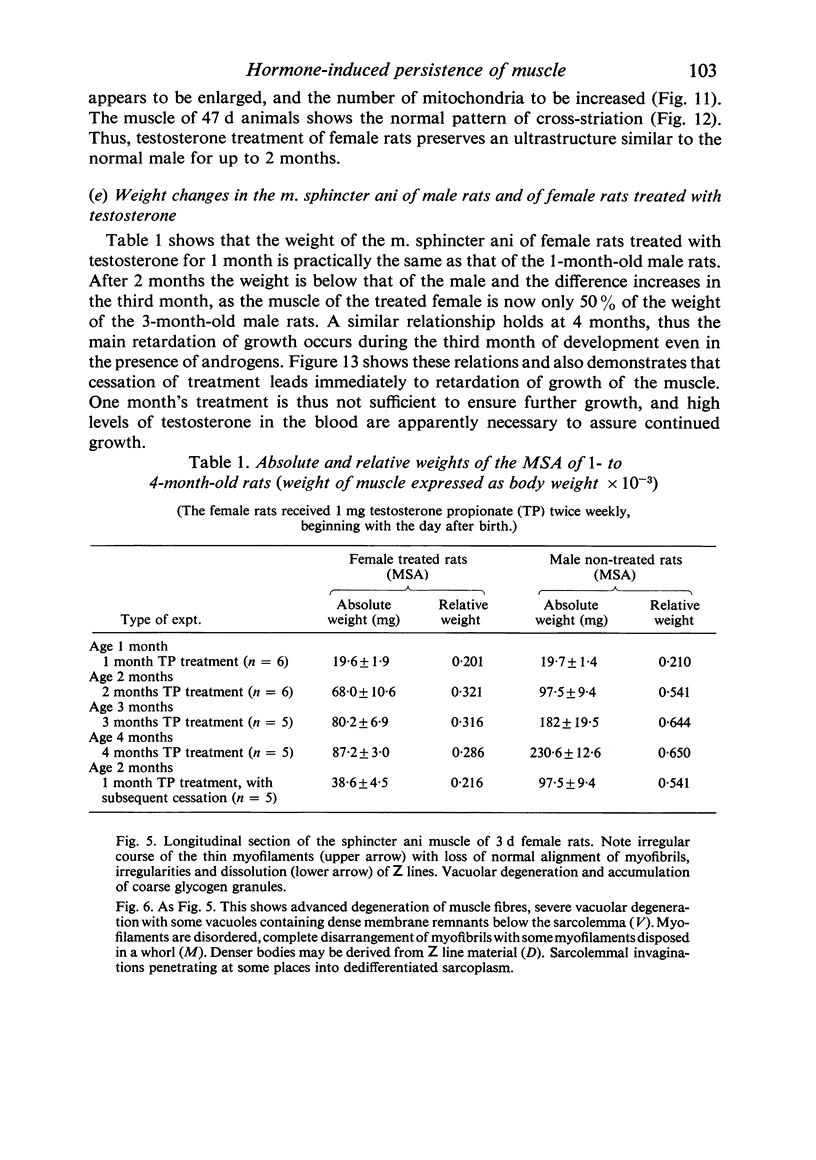
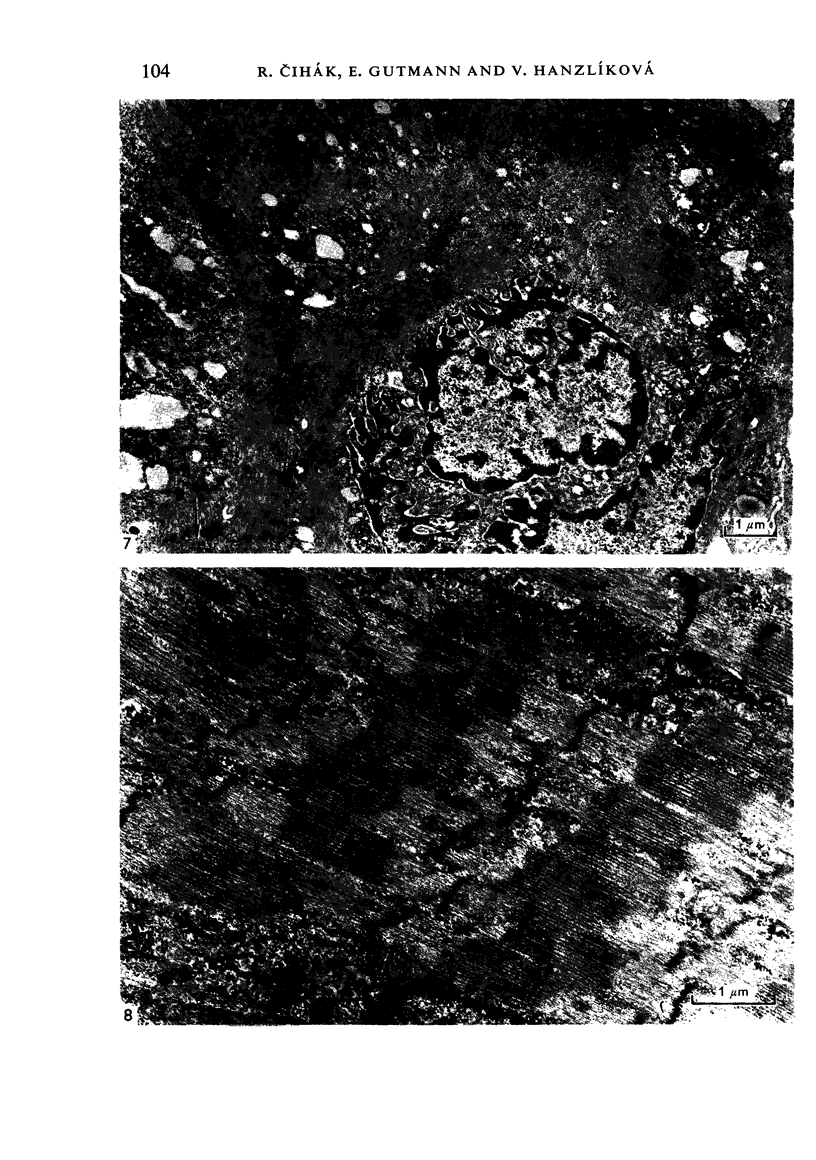

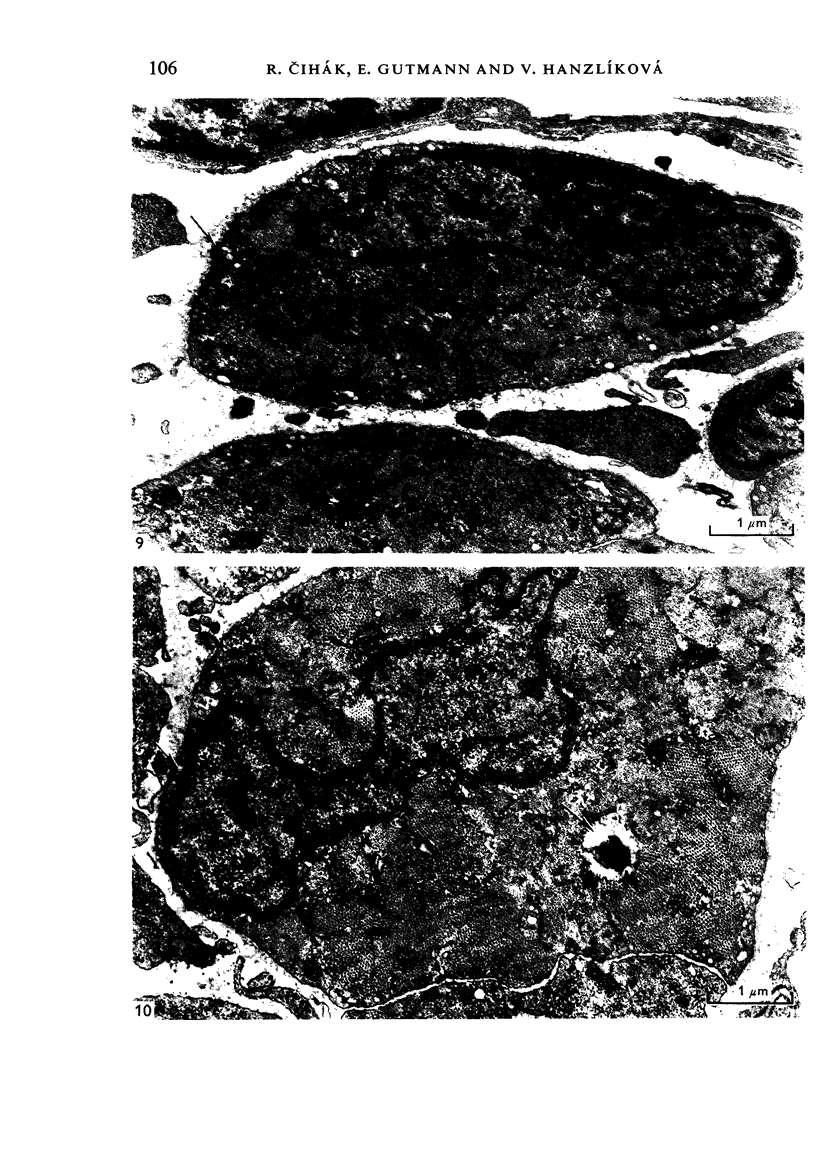

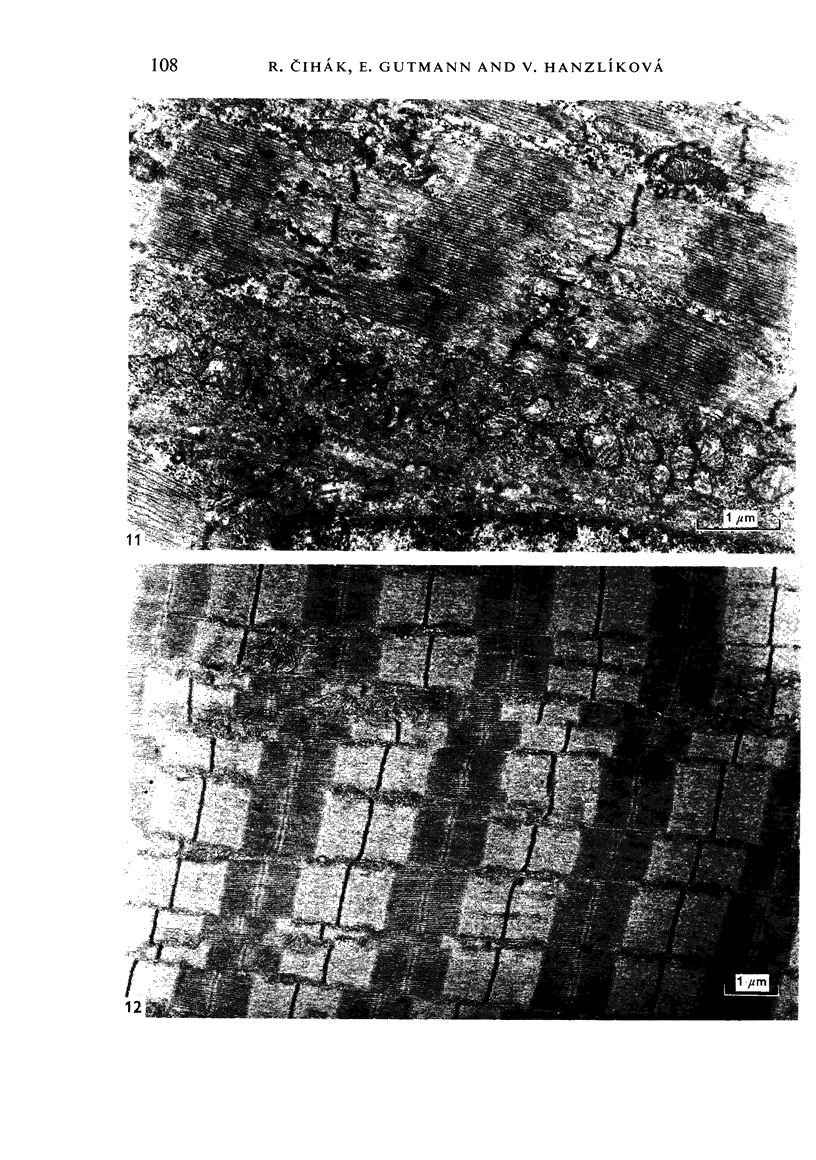
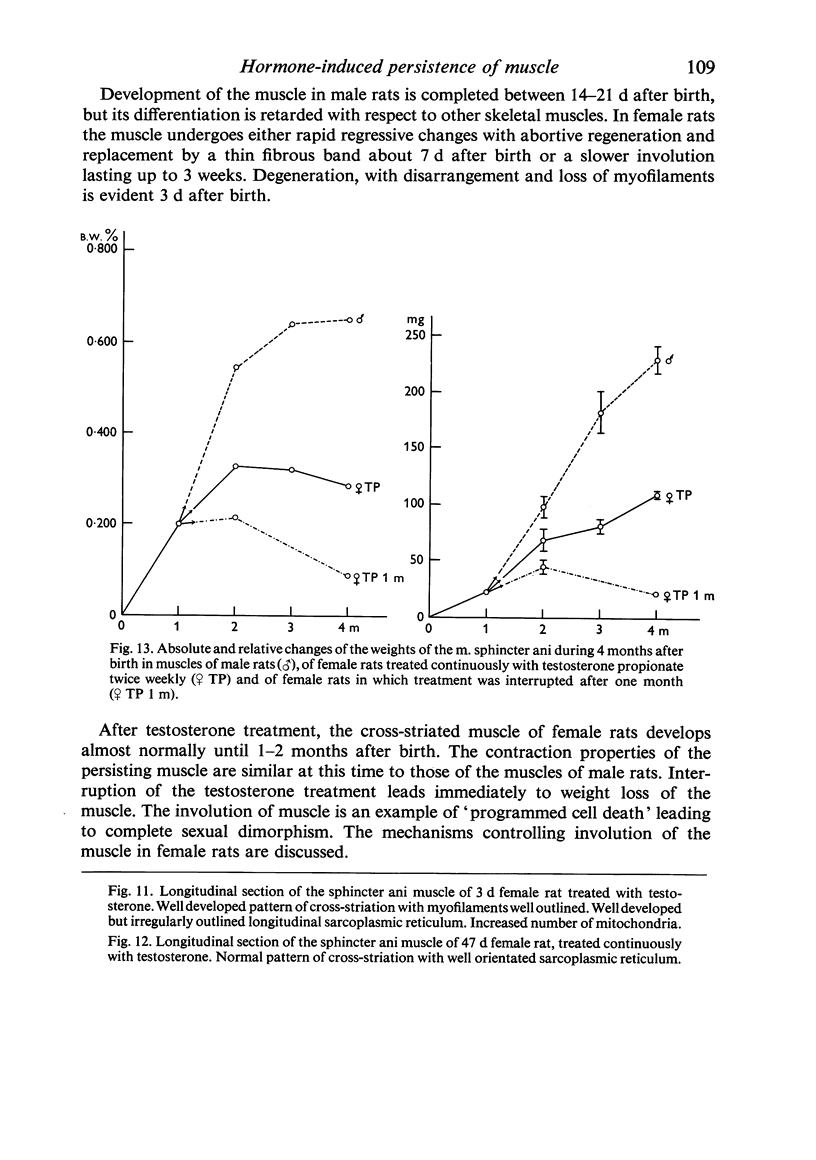
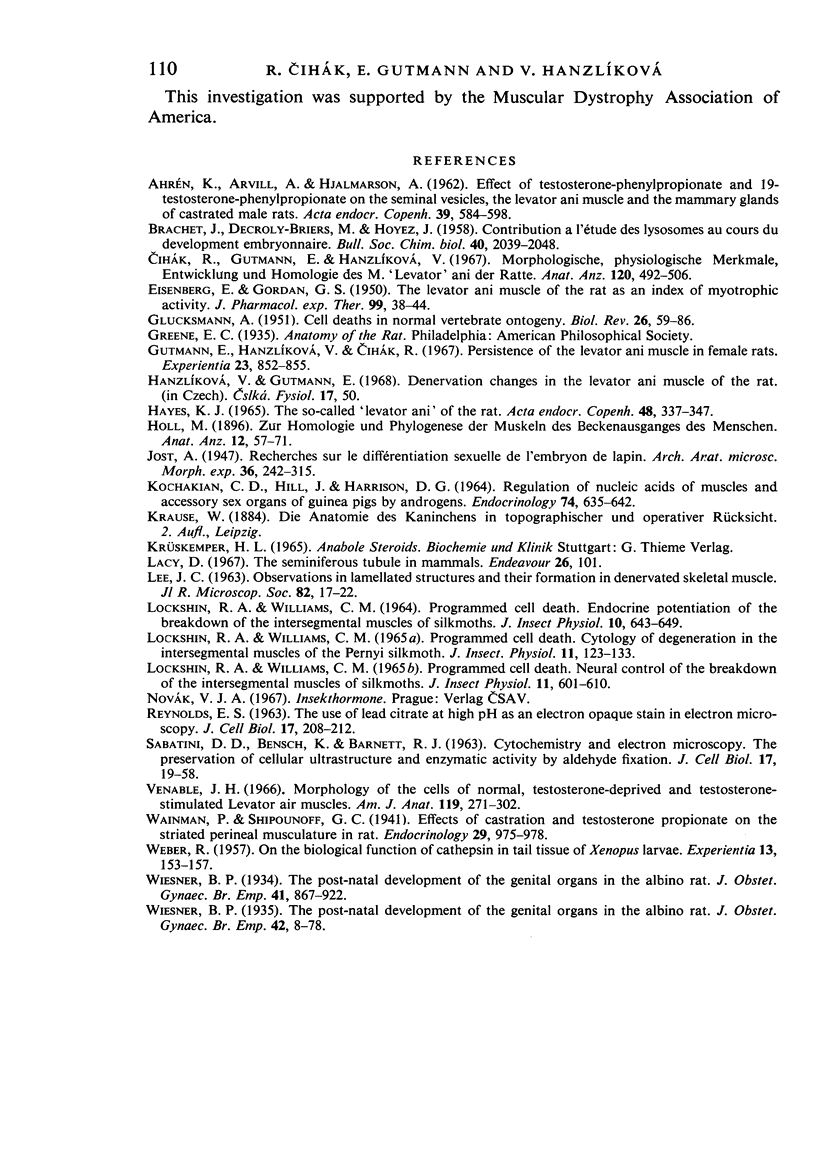
Images in this article
Selected References
These references are in PubMed. This may not be the complete list of references from this article.
- AHREN K., ARVILL A., HJALMARSON A. Effect of testosteronephenylpropionate and 19-nortestosteronephenylpropionate on the seminal vesicles, the levator ani muscle and the mammary glands of castrated male rats. Acta Endocrinol (Copenh) 1962 Apr;39:584–598. doi: 10.1530/acta.0.0390584. [DOI] [PubMed] [Google Scholar]
- BRACHET J., DECROLY-BRIERS M., HOYEZ J. Contribution à l'étude des lysosomes au cours du développement embryonnaire. Bull Soc Chim Biol (Paris) 1958;40(12):2039–2048. [PubMed] [Google Scholar]
- Cihák R., Gutmann E., Hanzilíková V. Morphologische, physiologische Merkmale, Entwicklung und Homologie des M. "levator" ani der Ratte. Anat Anz. 1967;120(5):492–506. [PubMed] [Google Scholar]
- EISENBERG E., GORDAN G. S. The levator ani muscle of the rat as an index of myotrophic activity of steroidal hormones. J Pharmacol Exp Ther. 1950 May;99(1):38–44. [PubMed] [Google Scholar]
- Gutmann E., Hanzlíková V., Cihák R. Persistence of the levator ani muscle in female rats. Experientia. 1967 Oct 15;23(10):852–853. doi: 10.1007/BF02146886. [DOI] [PubMed] [Google Scholar]
- HAYES K. J. THE SO-CALLED 'LEVATOR ANI' OF THE RAT. Acta Endocrinol (Copenh) 1965 Mar;48:337–347. doi: 10.1530/acta.0.0480337. [DOI] [PubMed] [Google Scholar]
- KOCHAKIAN C. D., HILL J., HARRISON D. G. REGULATION OF NUCLEIC ACIDS OF MUSCLES AND ACCESSORY SEX ORGANS OF GUINEA PIGS BY ANDROGENS. Endocrinology. 1964 Apr;74:635–642. doi: 10.1210/endo-74-4-635. [DOI] [PubMed] [Google Scholar]
- LOCKSHIN R. A., WILLIAM C. M. PROGRAMMED CELL DEATH. 3. NEURAL CONTROL OF THE BREAKDOWN OF THE INTERSEGMENTAL MUSCLES OF SILKMOTHS. J Insect Physiol. 1965 May;11:601–610. doi: 10.1016/0022-1910(65)90142-3. [DOI] [PubMed] [Google Scholar]
- LOCKSHIN R. A., WILLIAMS C. M. PROGRAMMED CELL DEATH--I. CYTOLOGY OF DEGENERATION IN THE INTERSEGMENTAL MUSCLES OF THE PERNYI SILKMOTH. J Insect Physiol. 1965 Feb;11:123–133. doi: 10.1016/0022-1910(65)90099-5. [DOI] [PubMed] [Google Scholar]
- Lacy D. The seminiferous tubule in mammals. Endeavour. 1967 May;26(98):101–108. [PubMed] [Google Scholar]
- REYNOLDS E. S. The use of lead citrate at high pH as an electron-opaque stain in electron microscopy. J Cell Biol. 1963 Apr;17:208–212. doi: 10.1083/jcb.17.1.208. [DOI] [PMC free article] [PubMed] [Google Scholar]
- SABATINI D. D., BENSCH K., BARRNETT R. J. Cytochemistry and electron microscopy. The preservation of cellular ultrastructure and enzymatic activity by aldehyde fixation. J Cell Biol. 1963 Apr;17:19–58. doi: 10.1083/jcb.17.1.19. [DOI] [PMC free article] [PubMed] [Google Scholar]
- Venable J. H. Morphology of the cells of normal, testosterone-deprived and testosterone-stimulated levator ani muscles. Am J Anat. 1966 Sep;119(2):271–301. doi: 10.1002/aja.1001190206. [DOI] [PubMed] [Google Scholar]
- WEBER R. On the biological function of cathepsin in tail tissue of Xenopus larvae. Experientia. 1957 Apr 15;13(4):153–155. doi: 10.1007/BF02158143. [DOI] [PubMed] [Google Scholar]



